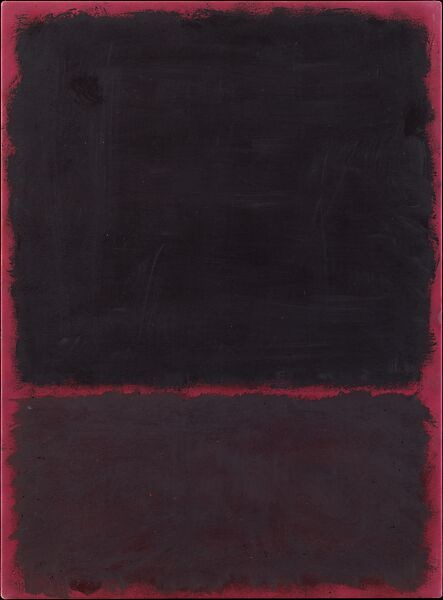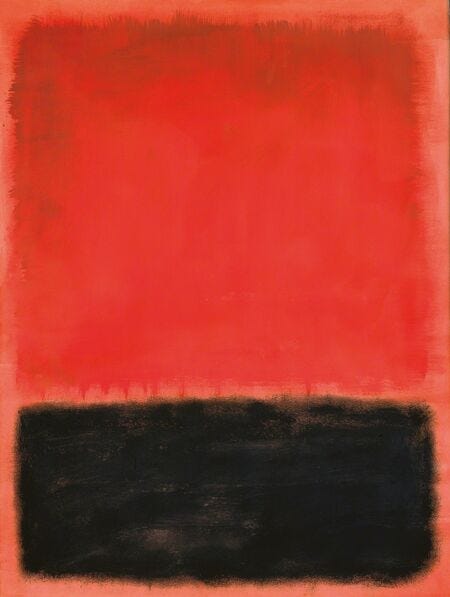On Rothko
Color fields are cool.
Rothko is a genius. After years of not understanding Rothko, I finally got it on my flight moving out of San Francisco. Ever since learning about abstract art, I’ve respected Rothko, but never appreciated or understood it.
It was 2018 when I saw Rothko for the first time in person, in the SFMoMA (No. 14, 1960). It was a painting of orange and blue. The bright orange connected with the deep blue through the “fuzz” in the middle. I heard Rothko pieces are meant to viewed up close, such that the painting covers the viewer’s entire field of view. Some people are so moved by Rothko that the paintings bring them to tears. I walked up close and stared at it for a solid 15 mins. I felt disinterested and I didn’t feel any emotional excitement or fluctuation. Over the years, I’ve returned to the same painting to see if my perspective had changed, but it did not.
The second major Rothko piece I saw was in the Metropolitan in NYC earlier this year (2024). I wanted to see if I’d feel different if I looked at more pieces from Rothko. That time, I found myself staring at it for a while, focusing on the “fuzz”. I started to notice the vibrant colors and ephemeral feeling of the “fuzz”. It started to become more interesting to me - the “fuzz” looked like the transient moment where two gaseous colors merged or collided together. Although the painting is static, the softness of the “fuzz” gave the painting a feeling of movement but also tension. It was very pretty to look at.
Later this year (2024) on my move-out flight of California, I put on some music, leaned into my seat, and closed my eyes. During the brief moment when my eyelids were about to completely touch, I saw the “fuzz” behind my eyelids. The natural light hitting my eyelids created colors that looked strikingly similar to Rothko’s No. 14 in SFMoMA. Though it wasn’t the exact colors that Rothko painted, in spirit it was the same - the “fuzz” was separating a bright warm tone and a dark cold tone.
I also understood the “fuzz” better. It wasn’t just a transient moment, it was the consumption of one color by another. Imagine blobs of color that expand and consume the canvas, and the painting being painted the moment where blobs are about to collide. If the painting had a time axis, then immediately after the moment being painted, certain colors would consumer others, eventually becoming homogenous. To reproduce the effect I’m describing, look at a white screen in a dark room, then immediately close one’s eyes. For a brief moment, the eyes don’t fully adjust and I see a white box with “fuzz” quickly consuming the white box to eventual darkness.
It feels like Rothko was painting conscience itself, something that can be observed by closing the eyes. I remember reading Rothko wanted to make art for the people, something everyone, regardless of class, can relate to. Nothing is more ubiquitous and relatable than conscience itself, and what a person sees by not seeing.
There’s something serendipitous about finally understanding Rothko a little bit more on my flight out of San Francisco. It feels like a parting gift. As the plane lands, I look forward to returning to San Francisco and paying No.14 a visit.





Fascinating read. Do you think your new appreciation for Rothko’s art has influenced how you perceive other abstract artists or art forms in general?